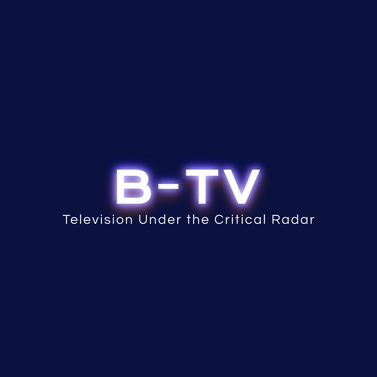B-TV at
Southwest PCA
February 23-26, 2022, Albuquerque, New Mexico
|
Special Area in Television Erin Giannini and Kristopher Woofter, Co-chairs
Exploitation. Lowbrow. Cult. Underground. Trash. Poverty Row. Programmers. Pulp. Popular. Mass. … These descriptors of the “B” movie apply just as well to what we term “B-TV,” as they describe an aesthetics derived from the industrial realities that produced them. But while “cult” TV has gained some degree of respectability as a site where the aesthetics of trash and the avant-garde often blend (Sconce 1995, Hawkins 2000), scholarship has not sufficiently addressed the importance of television that falls outside the zone of cult or “prestige” programming. |
This special area of the Southwest PCA Television Area, “B-TV: Television Under the Critical Radar,” in parallel with the new book series of the same name from Bloomsbury, looks into redrawing the boundaries around what can be considered “important” or “influential” television across the globe. What do we find when we go “under the critical radar” of prestige television? What lies beneath and beyond the high-low critical binary that continues to haunt Western media scholarship? Eliminating the requirement for prestige or even “cult,” status as a primary reason for study, we hope to examine characteristics and contradictions of (mass-)cultural trends and the (often elided) production realities typically seen as falling exclusively under the purview of prestige programming.
Are you interested in the study of popular, or even reviled forms of television that still might help us to understand ourselves and others within the context of mass art, mass culture, national or global community, and national or global production? Join us!
Information on B-TV papers and roundtable coming soon.
Send queries to both Erin Giannini and Kristopher Woofter:
Learn more about the B-TV Initiative and Collective here.
Framing References for “B-TV”:
Abbot, Stacey and Lorna Jowett, editors. 2021. Global TV Horror. Cardiff, UK: University of Wales Press.
Davis, Blair. 2012. The Battle for the Bs: 1950s Hollywood and the Rebirth of Low-Budget Cinema. New Brunswick, NJ and London: Rutgers
University Press.
Hawkins, Joan. 2000. Cutting Edge: Art-Horror and the Horrific Avant-Garde. Minneapolis and London: University of Minnesota Press.
Jowett, Lorna and Stacey Abbott. 2013. TV Horror: Investigating the Dark Side of the Small Screen. London: I.B. Tauris.
Mills, Brett. 2010. “Invisible Television: The Programs No One Talks About Even Though Lots of People Watch Them.” Critical Studies in
Television. March, vol. 5, issue 1, pp. 1-16 (It looks as if the whole issue is devoted to the topic: https://journals.sagepub.com/toc/csta/5/1)
Sconce, Jeffrey. 1995. “Trashing the Academy: Taste, Excess, and an Emerging Politics of Cinematic Style.” Screen. Winter, vol. 36, issue 4,
pp. 371-393.
Spigel, Lynn. Make Room for TV: Television and the Family Ideal in Postwar America. Chicago: University of Chicago Press, 1992.
Thompson, Derek. 2014. “How Highbrow Wins in a Lowbrow World.” The Atlantic, October 16,
https://www.theatlantic.com/business/archive/2014/10/the-economics-of-highbrow/381477/, accessed June 2, 2020.
West, Thomas J. 2015. “How STARZ Perfected the Lowbrow.” The Outtake: Film, Television, Classical, Contemporary, Medium.com, June 2,
https://medium.com/the-outtake/how-starz-perfected-the-lowbrow-9264cbe3a39, accessed June 2, 2020.
Wolff, Michael. 2014. Television Is the New Television: The Unexpected Triumph of Old Media in the Digital Age. New York: Penguin.
Are you interested in the study of popular, or even reviled forms of television that still might help us to understand ourselves and others within the context of mass art, mass culture, national or global community, and national or global production? Join us!
Information on B-TV papers and roundtable coming soon.
Send queries to both Erin Giannini and Kristopher Woofter:
Learn more about the B-TV Initiative and Collective here.
Framing References for “B-TV”:
Abbot, Stacey and Lorna Jowett, editors. 2021. Global TV Horror. Cardiff, UK: University of Wales Press.
Davis, Blair. 2012. The Battle for the Bs: 1950s Hollywood and the Rebirth of Low-Budget Cinema. New Brunswick, NJ and London: Rutgers
University Press.
Hawkins, Joan. 2000. Cutting Edge: Art-Horror and the Horrific Avant-Garde. Minneapolis and London: University of Minnesota Press.
Jowett, Lorna and Stacey Abbott. 2013. TV Horror: Investigating the Dark Side of the Small Screen. London: I.B. Tauris.
Mills, Brett. 2010. “Invisible Television: The Programs No One Talks About Even Though Lots of People Watch Them.” Critical Studies in
Television. March, vol. 5, issue 1, pp. 1-16 (It looks as if the whole issue is devoted to the topic: https://journals.sagepub.com/toc/csta/5/1)
Sconce, Jeffrey. 1995. “Trashing the Academy: Taste, Excess, and an Emerging Politics of Cinematic Style.” Screen. Winter, vol. 36, issue 4,
pp. 371-393.
Spigel, Lynn. Make Room for TV: Television and the Family Ideal in Postwar America. Chicago: University of Chicago Press, 1992.
Thompson, Derek. 2014. “How Highbrow Wins in a Lowbrow World.” The Atlantic, October 16,
https://www.theatlantic.com/business/archive/2014/10/the-economics-of-highbrow/381477/, accessed June 2, 2020.
West, Thomas J. 2015. “How STARZ Perfected the Lowbrow.” The Outtake: Film, Television, Classical, Contemporary, Medium.com, June 2,
https://medium.com/the-outtake/how-starz-perfected-the-lowbrow-9264cbe3a39, accessed June 2, 2020.
Wolff, Michael. 2014. Television Is the New Television: The Unexpected Triumph of Old Media in the Digital Age. New York: Penguin.


